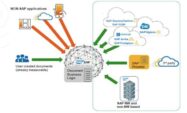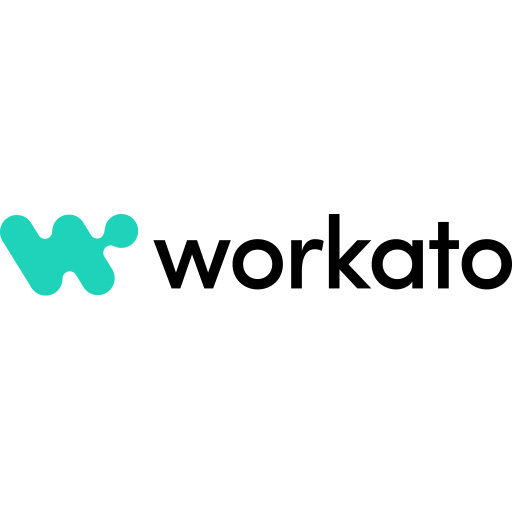SAP Digital Integration Hub
Filter By
Browse By
- SAP Analytics and AI
- SAP Application Development and Integration
- All SAP Application Development and Integration
- SAP ABAP
- SAP ABAP Development Tools
- SAP ABAP Test Cockpit
- SAP API Management
- SAP BAPI
- SAP Basis
- SAP BRF
- SAP Business Application Studio
- SAP CMS
- SAP Design Studio
- SAP Development Tools
- SAP DevOps
- SAP EAI
- SAP EDI
- SAP Extension Suite
- SAP Fiori
- SAP Fiori Elements
- SAP Integration Suite
- SAP Low Code Application Development
- SAP Low Code Automation
- SAP Netweaver
- SAP Release Management
- SAP UI5
- SAP Web Application Server
- SAP Web IDE
- SAP Business Process Management
- SAP Center of Excellence
- SAP CIO
- SAP Customer Experience
- SAP Data and Data Management
- All SAP Data and Data Management
- SAP BW
- SAP BW/4HANA
- SAP Crystal Reports
- SAP Data Archiving
- SAP Data Center
- SAP Data Governance
- SAP Data Integration
- SAP Data Migration
- SAP Data Quality
- SAP Data Services
- SAP Data Strategy
- SAP Data Visualization
- SAP Data Warehouse Cloud
- SAP DMS
- SAP Document Control
- SAP EIM
- SAP ETL
- SAP ETL Tools
- SAP HANA
- SAP HANA Administration
- SAP HANA Deployment Infrastructure
- SAP HANA Studio
- SAP Master Data
- SAP Master Data Governance
- SAP MDM
- SAP Enterprise Architect
- SAP Enterprise Asset Management
- SAP ERP
- SAP Finance
- All SAP Finance
- SAP Accounting
- SAP AR AP
- SAP Asset Accounting
- SAP Billing Systems
- SAP BPC
- SAP BRIM
- SAP Cash Management
- SAP Central Finance
- SAP Controlling
- SAP COPA
- SAP Cost Center Accounting
- SAP Currency Risk
- SAP e-invoicing
- SAP FICO
- SAP Finance Automation
- SAP Advanced Financial Closing
- SAP Financial Consolidation
- SAP Financial Planning
- SAP FX Risk
- SAP General Ledger
- SAP Global Tax Management
- SAP Hyperion
- SAP Order to Cash
- SAP Payment Processing
- SAP Profitability Analysis
- SAP Rebate Management
- SAP S/4HANA Finance
- SAP SWIFT Compliance
- SAP Treasury Management
- SAP Universal Journal
- SAP Governance Risk and Compliance
- SAP Human Capital Management
- SAP Intelligent Technologies
- SAP Platform and Technology
- All SAP Platform and Technology
- SAP Business Technology Platform
- SAP Cloud
- SAP Cloud Connector
- SAP Cloud Integration Platform
- SAP Cloud Migration
- SAP Cloud Platform
- SAP Cloud Providers
- SAP Cloud Strategy
- SAP Digital Signature
- SAP Container Platform
- SAP HANA Enterprise Cloud
- SAP Digital Asset Management
- SAP Smart Forms
- SAP HEC
- SAP Digital Integration Hub
- SAP Hyperscalers
- SAP Infrastructure
- SAP Messaging
- SAP Quality and Testing
- SAP Security
- SAP Spend Management
- SAP Supply Chain Management
- All SAP Supply Chain Management
- SAP APO
- SAP Asset Management
- SAP Business Network
- SAP Digital Manufacturing Cloud
- SAP Digital Twin
- SAP EWM
- SAP IBP
- SAP Inventory Management
- SAP Label Printing
- SAP Logistics
- SAP Manufacturing
- SAP Manufacturing Automation
- SAP MES
- SAP MII
- SAP MM
- SAP MRO
- SAP MRP
- SAP Order Management
- SAP Plant Maintenance
- SAP PLM
- SAP Production Planning
- SAP S&OP
- SAP SD
- SAP SPM
- SAP Supply Chain Planning
- SAP Track and Trace
- SAP Transportation Management
- SAP System Administration
What Is a Digital Integration Hub?
A Digital Integration Hub (DIH) is an architecture that aggregates data sources from multiple back-end systems of record into a low-latency, high-performance data store. It supports access to data via an application programming interface (API) services layer. The data store is synchronized with the back-end sources using a combination of event-based, request-based, and batch integration patterns.
What Is a Digital Integration Hub?
A Digital Integration Hub (DIH) is an architecture that aggregates data sources from multiple back-end systems of record into a low-latency, high-performance data store. It supports access to data via an application programming interface (API) services layer. The data store is synchronized with the back-end sources using a combination of event-based, request-based, and batch integration patterns.
A DIH enables the implementation of large-scale, high-throughput, and low-latency front-end API services by:
- Preventing the back-end systems from being overwhelmed with API services-generated workloads
- Avoiding complex integrations to support the API services implementation
- Decoupling the back-end data sources from the front-end API services.
By extending their API platform with a digital integration hub, organizations can add value by enabling analytics and data integration.
What Is an SAP Digital Integration Hub?
SAP Business Technology Platform (SAP BTP) can be used as a DIH, explains SAP’s Sven Huberti. The SAP BTP provides tools and frameworks to build or configure multi-experience applications, such as Business Application Studio, SAPUI5, mobile software development kits, and conversational AI.
The front-end API services should be fully managed from a security, performance, and analytical perspective, usually using an API gateway. But the API services may need to be modeled first if you want to implement a new API. This can be done via the SAP BTP API management service, which enables you to:
- Model APIs first — define a contract between the API consumer and the API implementation based on open standards like OpenAPI or OData.
- Secure APIs — mediate internet-oriented security concepts with on-premise security concepts and protect back-end systems from unforeseeable traffic.
- Increase performance of APIs — boost responsiveness through concepts like caching and purpose-oriented refactoring.
- Steer your API platform — monitor your digital strategy so you can define project priorities based on API adoption.
Additional Resources for SAPinsiders
How a Digital Integration Hub Is a Business Game-Changer in the Experience Economy. Every SAP customer is concerned with ways to safeguard and optimize their many different sources of revenue. When rapidly evolving business environments are thrown into the mix, how can these organizations stay informed to know that all the systems contributing to the revenue stream communicate and integrate data properly? Two SAP experts recommend companies consider a DIH to deliver excellence at scale and tangible business value.
SAP’s Integration Solution Advisory Methodology (ISA-M) for the Intelligent Enterprise. A holistic integration approach is a crucial prerequisite for organizations pursuing a digital path for their business. This article introduces SAP’s ISA-M, which helps organizations shape their integration strategy — using predefined integration patterns for processes-, data-, user-, and Internet of Things-centric integration scenarios — and become an Intelligent Enterprise.
Vendors that can help SAP customers with a DIH include: Baton, Boomi, SnapLogic, and Stonebranch.
1343 results
-

Accelerated Migrations with AWS Migration Hub
Reading time: 2 mins
Most businesses still have SAP applications on-premises and a legacy infrastructure that is both cumbersome to manage as well as expensive. These legacy systems come with a considerable deferred hardware and maintenance charge, in addition to no room for growth or change. As a result, organizations often deal with slow processes, low scalability, and the…
-

 Premium
Premium
Model Your Direct Ship Functionality for Maximum Benefit
Reading time: 24 mins
Reducing order cycle time is a priority for many companies. The author demonstrates how to correctly configure your direct ship functionality. He also explains the benefits of a successful direct ship model, which include the ability to ship from the site closest to the customer, reduced shipping costs, and an increased return on inventory investment....…
-

- SAP Access Control
 Premium
Premium
Is SAP Digital/Indirect Access License Required for Customers?
Reading time: 5 mins
An increasing number of organizations rely on bots or other non-human actors to address regular tasks and processes throughout their SAP landscapes. Organizations may want to use this method, Digital Access, or rely on third-party apps to access SAP systems, which is Indirect Access. Though they can help businesses streamline operations, Digital and Indirect Access…
-
-

- SAP Cloud Platform
 Premium
Premium
Intelligent Supply Chain Management with SAP Cloud Platform
Reading time: 20 mins
Learn how to optimize your supply chain management process using cloud services from SAP Cloud Platform. The scenario used in this article identifies the inconsistent data readings at run time and forecasts failures. It also describes how SAP Cloud Platform proactively generates a purchase order if required. With the help of SAP Cloud Platform, you...…
-

Digital Shop Floor Management: Achieving great things in small steps
Reading time: 8 mins
Digital shop floor management utilizes software solutions to monitor and control factory operations in real-time, enhancing efficiency, resource savings, and decision-making while fostering collaboration between managers and employees.
-

Skillsoft expands SAP SuccessFactors partnership
Published: 01/24/2025
Reading time: 3 mins
Skillsoft has announced a new integration with SAP SuccessFactors’ talent intelligence hub, set to launch in early 2025, enabling organizations to gain deeper insights into workforce skills and deliver personalized learning paths, thereby enhancing workforce agility, employee engagement, and talent mobility while optimizing skills tracking and workforce planning.
-

 Premium
Premium
How Add-On 3.0 Integrates SAP ERP HCM and SuccessFactors HCM Curricula
Reading time: 16 mins
Learn the steps for integrating the SAP ERP HCM Qualifications with SuccessFactors LMS curriculum as part of the Integration Add-On 3.0 for SuccessFactors HCM Suite and SAP ERP HCM Support Package 00 using SAP HANA Cloud Integration as middleware. Once employees’ curricula statuses are synchronized between SAP ERP HCM and SuccessFactors Learning Management System (LMS),...…
-
-

- SAP AI
 Premium
Premium
How to Implement a RAG Use Case With The Generative AI Hub on SAP AI Core
Click Here to View the Session Deck In this session you will learn how to include large language models into your application. You will learn how to use custom documents to perform Retrieval Augmented Generation for Question-Answering to customize the models’ responses to your needs. The use case will be implemented using the Python SDK...…
-

Delivering on the Digital Supply Chain Promise
Reading time: 5 mins
The drones are taking over. If not the drones, then artificial intelligence (AI) will take over and make decisions on our behalf. We will just lean back, and our jobs (if we still have them) will amount to pushing some corrective buttons, occasionally. Whatever the spin, and whatever people imagine, parts of the digital supply…
-

Future Skills: Navigating the Digital Workplace
Reading time: 3 mins
As future skills like adaptability, critical thinking, and AI literacy become crucial in the workforce, professionals are encouraged to integrate AI training and obtain certifications through platforms like SAP Learning Hub, enhancing their career prospects and ensuring competitive advantage in an evolving digital landscape.
Become a Member
Unlimited access to thousands of resources for SAP-specific expertise that can only be found here.
Become a Partner
Access exclusive SAP insights, expert marketing strategies, and high-value services including research reports, webinars, and buyers' guides, all designed to boost your campaign ROI by up to 50% within the SAP ecosystem.
Upcoming Events
Related Vendors
Your request has been successfully sent


